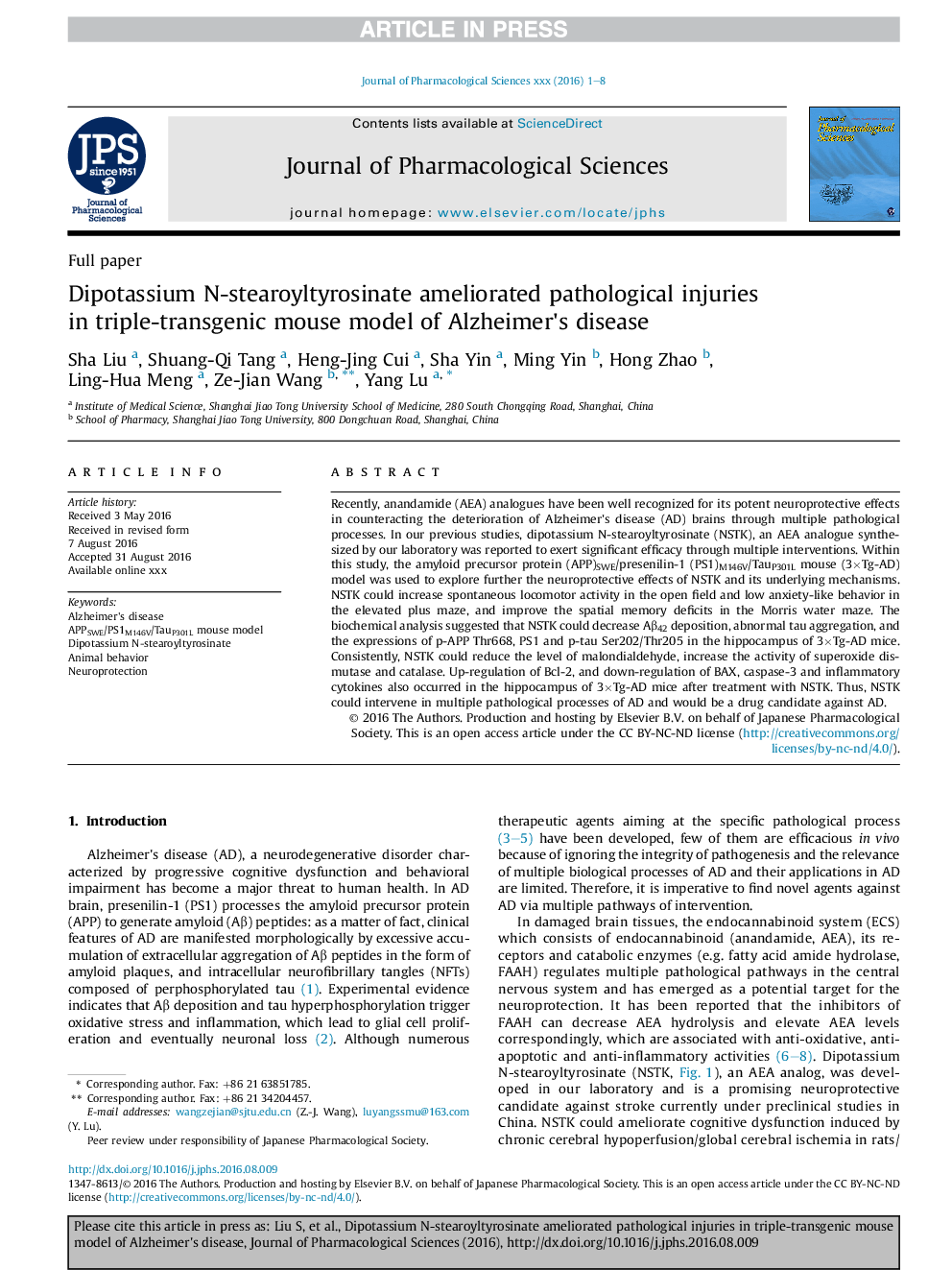| Article ID | Journal | Published Year | Pages | File Type |
|---|---|---|---|---|
| 8533664 | Journal of Pharmacological Sciences | 2016 | 8 Pages |
Abstract
Recently, anandamide (AEA) analogues have been well recognized for its potent neuroprotective effects in counteracting the deterioration of Alzheimer's disease (AD) brains through multiple pathological processes. In our previous studies, dipotassium N-stearoyltyrosinate (NSTK), an AEA analogue synthesized by our laboratory was reported to exert significant efficacy through multiple interventions. Within this study, the amyloid precursor protein (APP)SWE/presenilin-1 (PS1)M146V/TauP301L mouse (3ÃTg-AD) model was used to explore further the neuroprotective effects of NSTK and its underlying mechanisms. NSTK could increase spontaneous locomotor activity in the open field and low anxiety-like behavior in the elevated plus maze, and improve the spatial memory deficits in the Morris water maze. The biochemical analysis suggested that NSTK could decrease Aβ42 deposition, abnormal tau aggregation, and the expressions of p-APP Thr668, PS1 and p-tau Ser202/Thr205 in the hippocampus of 3ÃTg-AD mice. Consistently, NSTK could reduce the level of malondialdehyde, increase the activity of superoxide dismutase and catalase. Up-regulation of Bcl-2, and down-regulation of BAX, caspase-3 and inflammatory cytokines also occurred in the hippocampus of 3ÃTg-AD mice after treatment with NSTK. Thus, NSTK could intervene in multiple pathological processes of AD and would be a drug candidate against AD.
Related Topics
Health Sciences
Pharmacology, Toxicology and Pharmaceutical Science
Pharmacology
Authors
Sha Liu, Shuang-Qi Tang, Heng-Jing Cui, Sha Yin, Ming Yin, Hong Zhao, Ling-Hua Meng, Ze-Jian Wang, Yang Lu,
